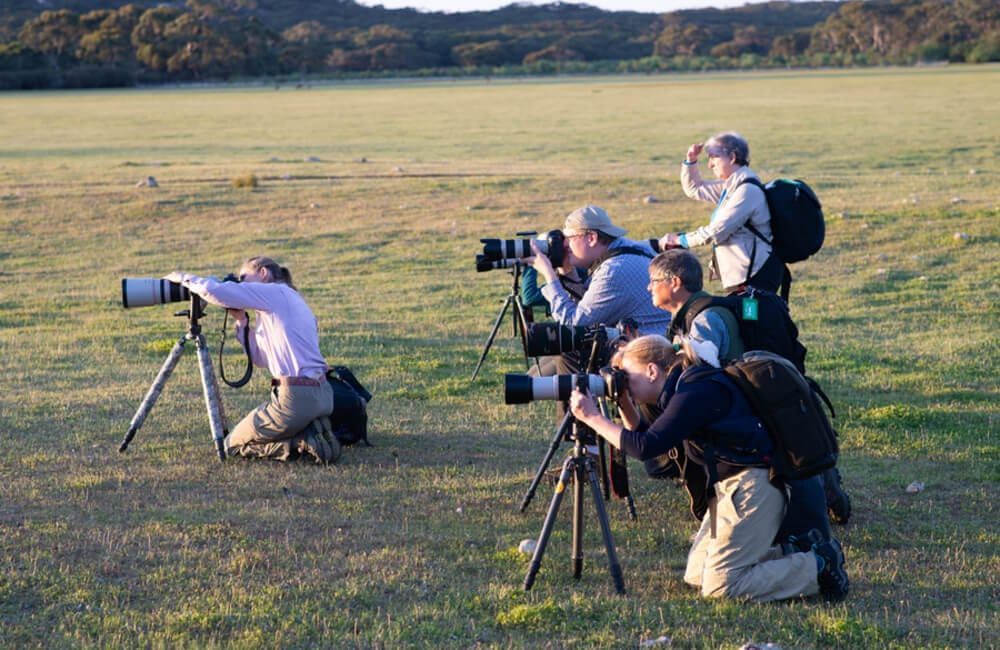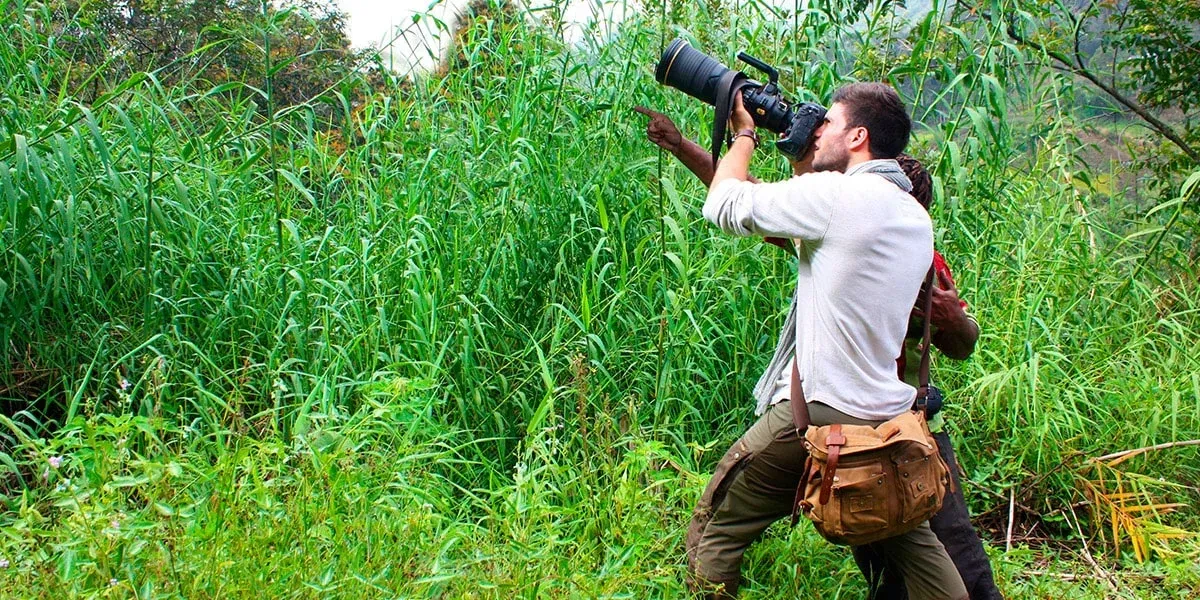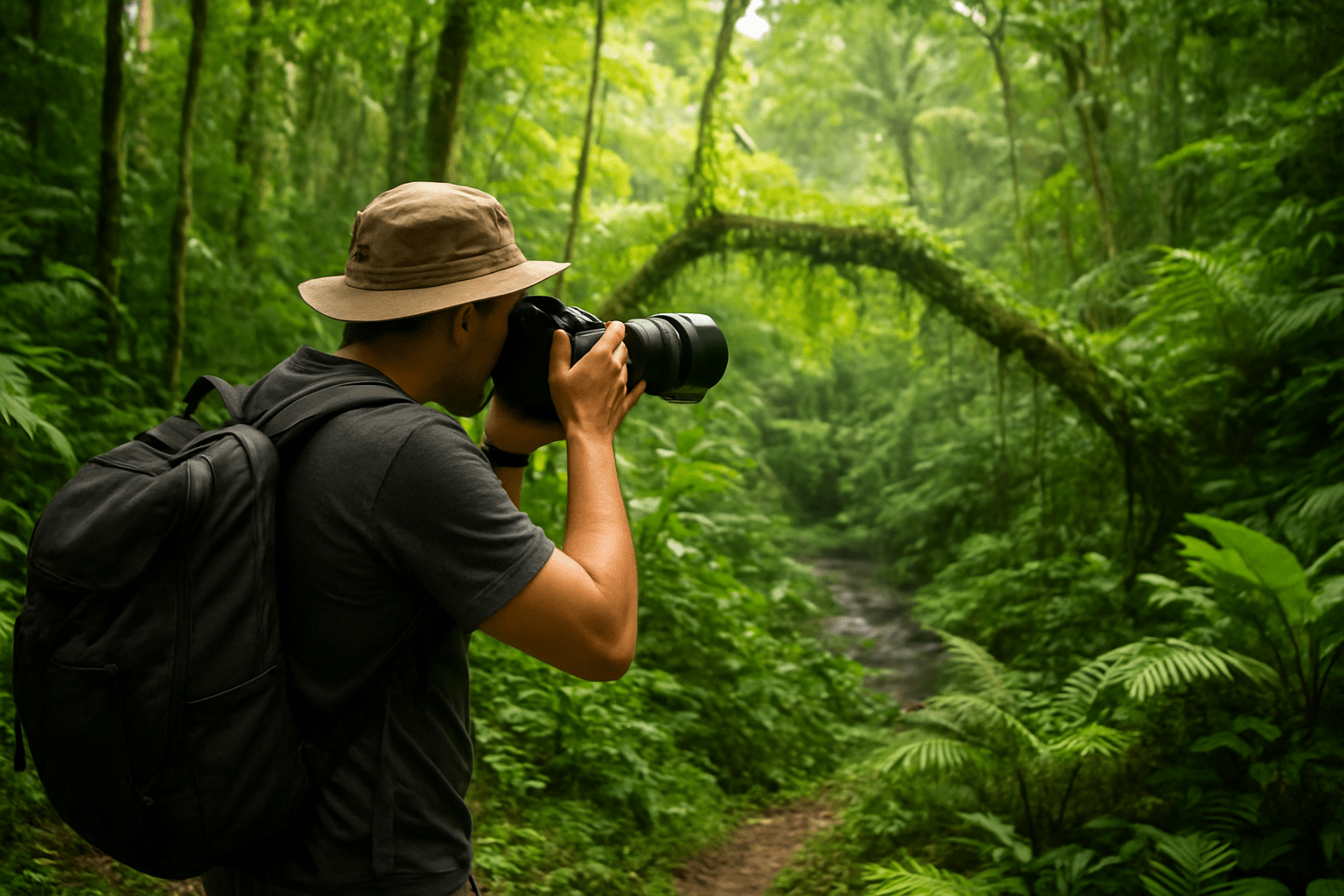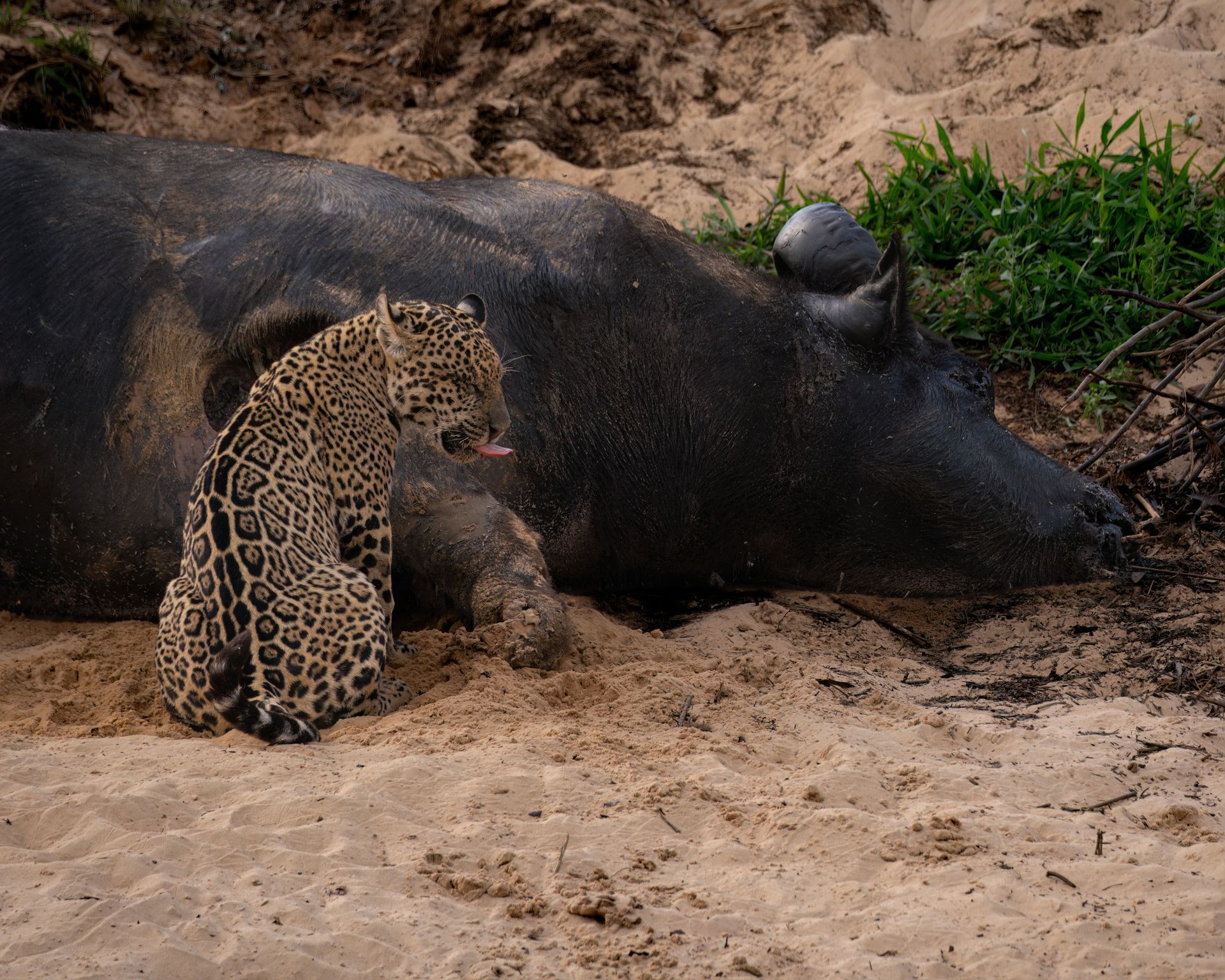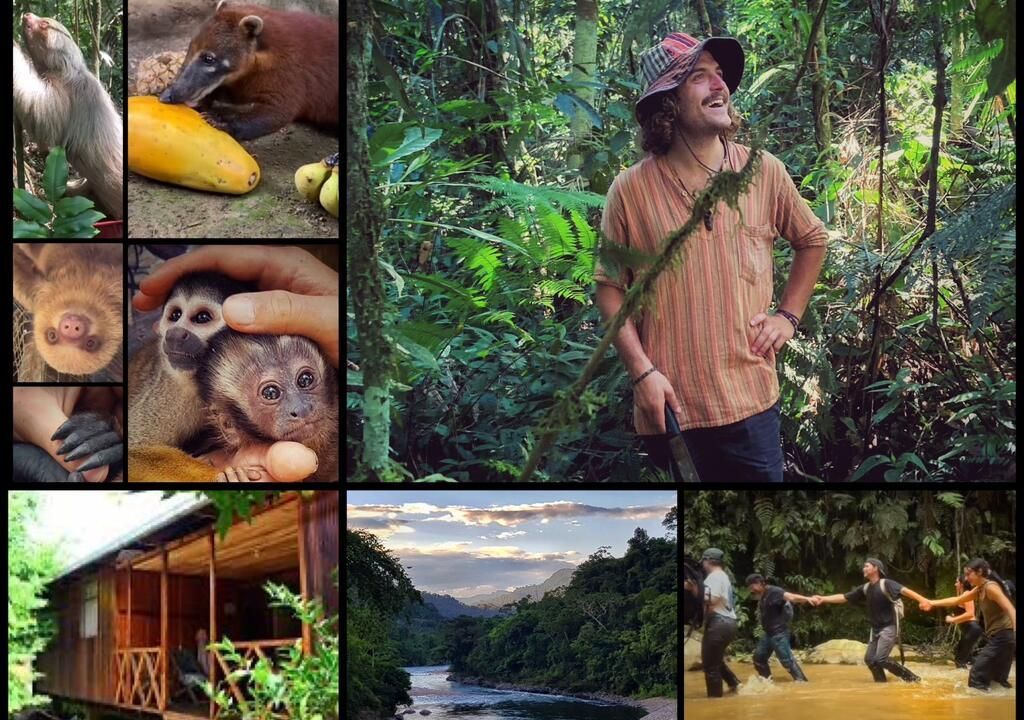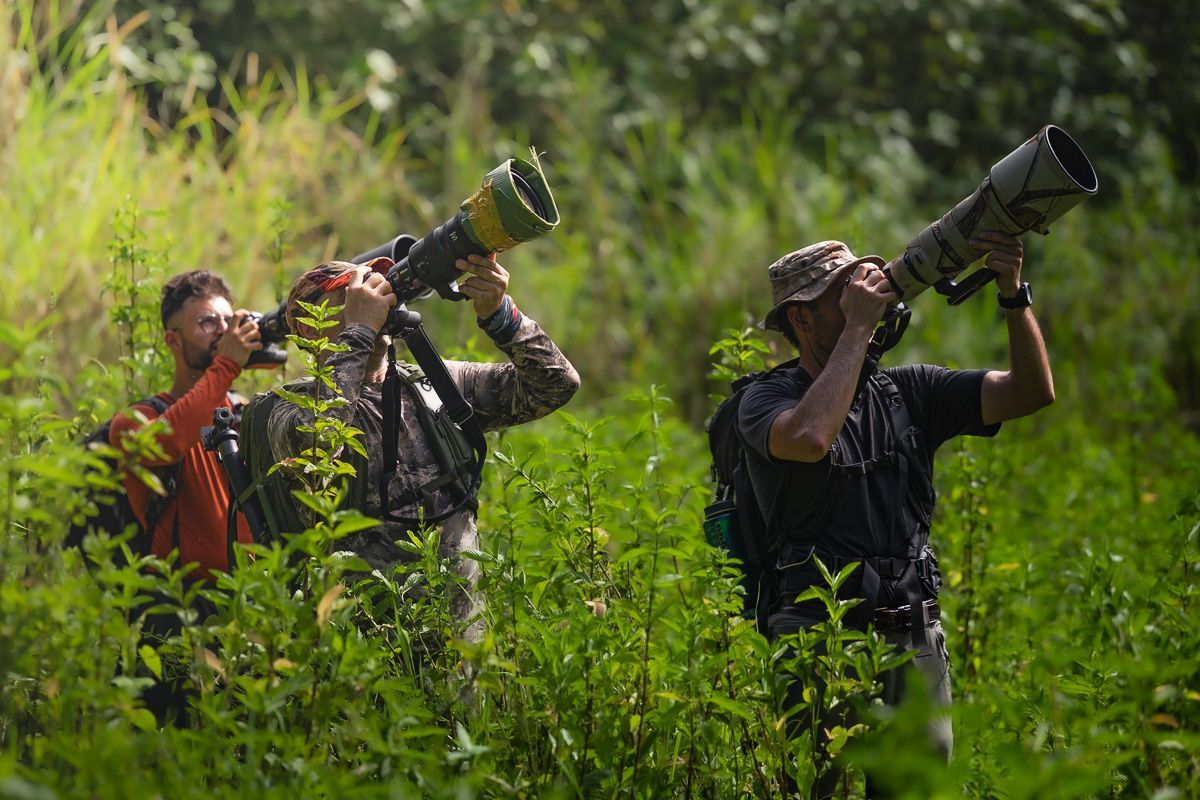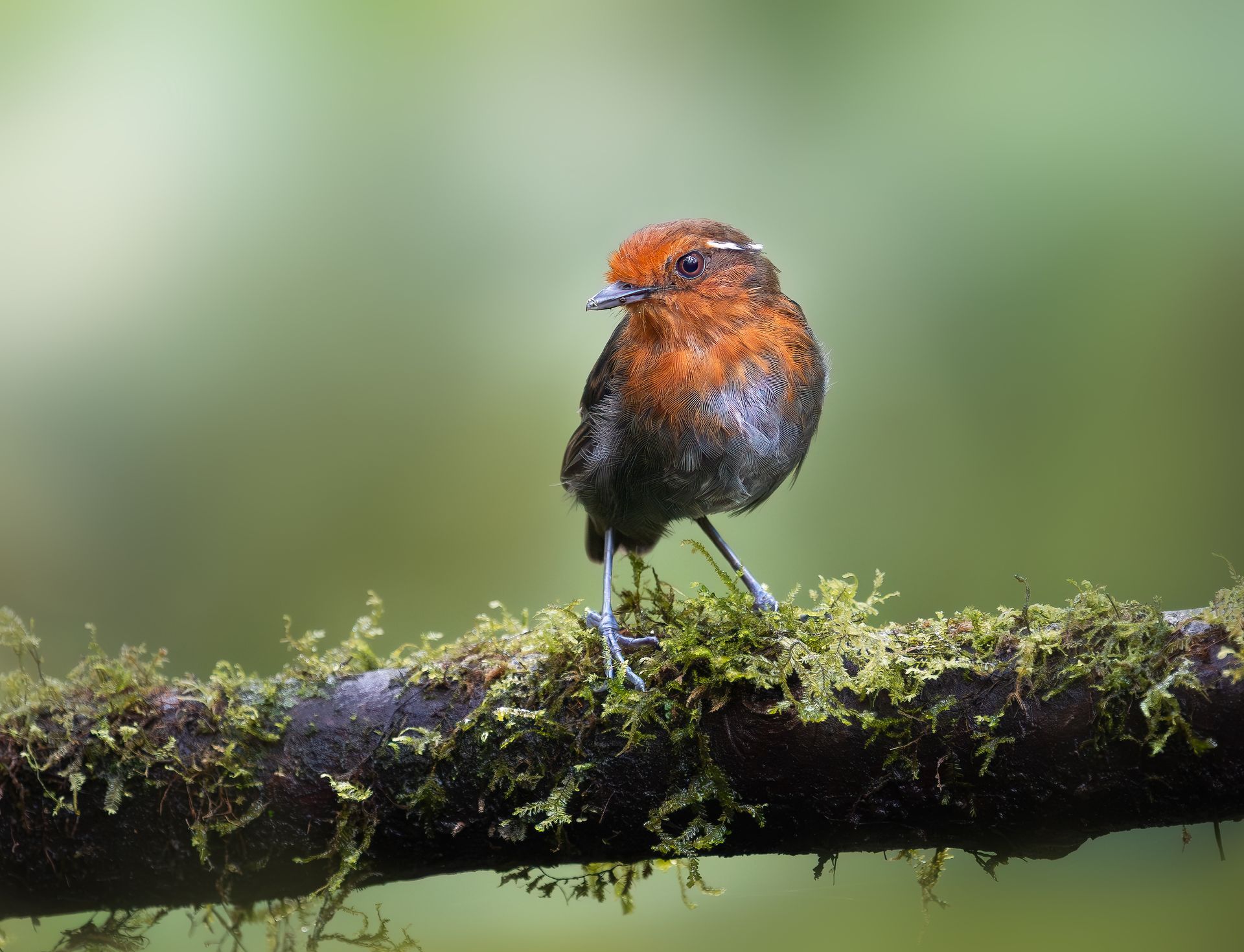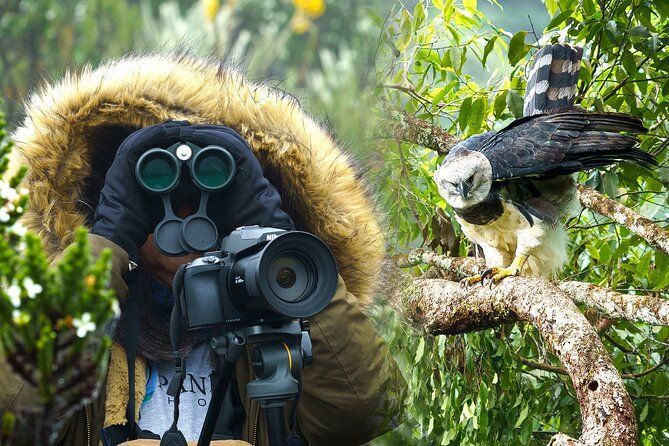From Binoculars to Telephoto Lenses: Essentials for Bird Photo Tours
From Binoculars to Telephoto Lenses: Essentials for Bird Photo Tours
Bird photography isn’t just about snapping beautiful shots—it’s about observation, patience, and having the right tools to transform fleeting moments into art. Whether you’re a seasoned photographer or an adventurous traveler joining one of Retorno Photo Tours’ expeditions in Colombia, your equipment will determine how effectively you capture the incredible diversity of birdlife that defines this region.
From the glint in a hummingbird’s eye to the wingspan of a soaring eagle, every detail matters. That’s why understanding what gear to bring—from binoculars to telephoto lenses—is key to making your bird photography tour both rewarding and efficient.
This comprehensive guide breaks down the essential tools every bird photographer should carry, tips for maximizing gear performance in the field, and expert recommendations based on the unique environments you’ll encounter across South America’s birding paradise.
1. The Importance of Choosing the Right Gear
Bird photography is one of the most technically demanding genres in wildlife photography. Birds move quickly, often stay hidden in dense habitats, and appear when you least expect them. Having the right gear isn’t just a matter of convenience—it’s the difference between a blurry image and a breathtaking photograph.
When you join a Retorno Photo Tour, you’ll often travel through a variety of ecosystems—from Colombia’s misty Andean cloud forests to the humid lowland rainforests of the Chocó region. Each environment poses its own challenges, from unpredictable lighting to moisture and distance. Therefore, gear
selection must be strategic, lightweight, and reliable.
2. Binoculars: The First Step to Spotting Your Subject
Before you even raise your camera, your eyes and binoculars do the groundwork. Spotting birds efficiently saves time and helps you anticipate behavior for the perfect shot.
2.1. What to Look for in Birding Binoculars
For bird photographers, the ideal binoculars strike a balance between magnification and field of view. Models in the 8x42 or 10x42 range are most popular because they offer clarity, brightness, and a wide enough field to track fast-moving birds.
- 8x42 binoculars are better for dense forests or early mornings when light is limited.
- 10x42 binoculars provide more magnification for open habitats like highlands or wetlands.
Look for binoculars with multi-coated lenses, waterproofing, and fog resistance—crucial features in tropical climates like Colombia’s.
2.2. Top Recommended Brands
- Swarovski EL or NL Pure – Premium optics for professionals.
- Zeiss Victory SF – Excellent contrast and color fidelity.
- Nikon Monarch HG – Great balance of quality and affordability.
When used effectively, binoculars don’t just help locate birds—they teach you about behavior, making you a better photographer overall.
3. The Camera Body: Your Most Important Investment
Once you’ve spotted your subject, the camera becomes your main companion. Bird photography demands speed, accuracy, and resilience. A camera with fast autofocus, high frame rates, and excellent image quality in varying light conditions is essential.
3.1. Key Camera Features for Bird Photography
- Fast Autofocus System: Birds move unpredictably; your camera must lock focus instantly.
- High Frame Rate (FPS): Capturing sequences helps freeze the perfect wing position. Aim for 10–30 FPS.
- High ISO Performance: Many birds are photographed in low-light forest conditions—clean ISO handling is vital.
- Weather Sealing: Protects against Colombia’s humid and rainy conditions.
- Customizable Buttons: Allow quick adjustments while tracking subjects.
3.2. Top Camera Models for Bird Photo Tours
- Sony A1 / A9 III – Blazing speed, exceptional autofocus, and real-time subject tracking.
- Canon R5 / R3 – Outstanding image quality, fast burst rates, and durability.
- Nikon Z9 / Z8 – Perfect for action shots, with impressive buffer depth.
- Fujifilm X-H2S – Excellent for travel photographers seeking a lighter setup.
A reliable camera body ensures you never miss those fleeting bird moments—like the Andean Cock-of-the-Rock’s display or a hummingbird’s split-second hover.
4. Lenses: The True Power Behind Every Shot
4.1. The Telephoto Lens – A Birder’s Best Friend
If your camera is the heart of your kit, your telephoto lens is the soul. Birds are small and often distant, so a long focal length is essential for frame-filling shots without disturbing the subject.
Recommended focal lengths:
- 300mm–400mm: Good balance of reach and mobility for forest birds.
- 500mm–600mm: Ideal for distant or shy species.
- 100–400mm zooms: Great flexibility for varied habitats.
Popular choices:
- Canon RF 100–500mm f/4.5–7.1L IS USM
- Sony 200–600mm f/5.6–6.3 G OSS
- Nikon 500mm PF f/5.6 or 600mm f/4
- Sigma and Tamron 150–600mm lenses (great value options)
4.2. Prime vs. Zoom Lenses
- Prime lenses (fixed focal lengths like 400mm f/2.8) provide superior sharpness, faster apertures, and better background blur—ideal for controlled environments or perched birds.
- Zoom lenses offer flexibility and portability, especially when photographing in varied habitats or on long hikes.
4.3. Wide-Angle and Mid-Range Lenses
Don’t forget to pack a 24–70mm or 16–35mm lens for landscapes, bird habitats, and environmental portraits. Many photographers underestimate the power of contextual shots—showing a bird within its natural surroundings adds narrative depth to your portfolio.
5. Tripods and Supports: Stability in Every Frame
A steady frame is crucial, especially when shooting at long focal lengths or in low light. However, carrying heavy gear through mountains or forests requires balancing stability with mobility.
5.1. Choosing the Right Tripod
- Carbon fiber tripods are light yet durable.
- Look for twist-lock legs for quick setup on uneven ground.
- Ensure a load capacity that exceeds your camera-lens combo.
Top picks include Gitzo Series 3, Leofoto LN-364C, or Manfrotto 055.
5.2. Gimbal Heads and Monopods
A gimbal head allows smooth panning and tracking of birds in flight without arm fatigue. For more mobile setups, monopods provide flexible support during long treks.
6. Accessories Every Bird Photographer Should Carry
In the tropics, it’s not just what you shoot with—it’s how you protect your gear and yourself. Here’s what experienced bird photographers swear by:
- Rain covers and dry bags for unpredictable weather.
- Lens cleaning kits for humidity and dust.
- Extra batteries and memory cards – Birding days are long, and recharging isn’t always possible.
- Lightweight field backpack with proper padding (brands like Lowepro, Think Tank, Shimoda).
- Beanbags for stabilizing shots from vehicles or hides.
- Headlamps for early morning or late evening sessions.
Colombia’s birding regions can be humid, foggy, and remote—so preparation is essential.
7. Clothing and Comfort: Gear for the Photographer
Staying comfortable in the field is just as important as having good equipment. Bird photography often involves long hours, changing weather, and challenging terrain.
7.1. Recommended Clothing
- Lightweight, moisture-wicking shirts in neutral colors.
- Convertible pants for temperature shifts.
- Waterproof hiking boots with good grip.
- Wide-brimmed hat for sun protection.
- Quick-dry rain jacket for tropical downpours.
7.2. Field Essentials
- Insect repellent
- Reusable water bottle
- Portable stool or kneeling pad
- Field notebook or phone app for species notes
The more prepared you are, the easier it is to focus on the art of photography rather than the discomfort of the environment.
8. Fieldcraft: More Important Than Gear
Even the best equipment won’t help if you can’t find or approach birds effectively. Advanced photographers develop patience and field awareness—skills honed through experience.
8.1. Learning Bird Behavior
Understanding bird calls, feeding patterns, and territorial habits dramatically increases your chances of great shots. Retorno guides are experts in local species, helping you anticipate movements before they happen.
8.2. Movement and Stealth
Move slowly, avoid sudden gestures, and wear earth-toned clothing. Birds detect motion faster than sound, so subtlety is key.
8.3. Ethical Practices
At Retorno, we emphasize ethical photography—no playback abuse, baiting, or habitat disturbance. The goal is to photograph birds naturally, respecting both their safety and your integrity as a wildlife photographer.
9. Protecting Gear in the Tropics
Tropical climates can be harsh on delicate electronics. Humidity, rain, and temperature shifts can cause damage if precautions aren’t taken.
9.1. Humidity Management
- Store gear in airtight cases with silica gel packs overnight.
- Use lens hoods to reduce fogging and water droplets.
- Avoid switching lenses in damp or dusty conditions.
9.2. Cleaning After Each Day
After each session, wipe down lenses and camera bodies with microfiber cloths. Inspect gear for fungus, especially in humid zones like the Chocó or Amazon region.
10. The Role of Technology in Modern Bird Photography
Today’s bird photographers benefit from AI-powered autofocus, GPS tagging, and advanced image stabilization. These tools make it easier than ever to focus on creativity while letting the camera handle technical challenges.
10.1. Useful Digital Tools
- GPS-enabled cameras or trackers help record bird locations.
- Mobile apps like Merlin Bird ID assist in quick identification.
- Drone photography (where permitted) offers creative perspectives on habitats.
However, Retorno Photo Tours always prioritizes minimal disturbance to wildlife—drone use is only allowed in approved, ethical contexts.
11. Why Choose Retorno Photo Tours for Your Bird Photography Journey
At Retorno Photo Tours, we know that great photography comes from the perfect combination of location, timing, and preparation. Our tours are crafted to help both enthusiasts and advanced photographers achieve professional-quality results while immersing in Colombia’s unparalleled biodiversity.
What Sets Us Apart
- Expert photography instructors familiar with Colombia’s birding hotspots
- Access to private reserves and local conservation zones
- Personalized itineraries focused on your photography goals
- Ethical and sustainable birding practices
- On-field mentoring, composition coaching, and image review sessions
When you travel with Retorno, you’re not just taking pictures—you’re telling the story of Colombia’s vibrant birdlife and the landscapes they inhabit.
12. Packing Checklist for Bird Photo Tours
Here’s a final summary of must-have items before you head out:
- Camera body (main and backup)
- 300–600mm telephoto lens
- 24–70mm or 70–200mm lens
- Tripod or monopod with gimbal
- Binoculars (8x42 or 10x42)
- Memory cards, batteries, chargers
- Lens cleaning kit
- Rain cover and dry bag
- Lightweight, breathable clothing
- Insect repellent and sunscreen
Preparation is half the success of a birding tour—packing smart allows you to focus on creativity in the field.
Conclusion: From Observation to Art
From your first binocular scan to the satisfying click of your shutter, bird photography is a journey of patience, precision, and appreciation. Whether you’re in the high Andes or deep Amazon, the magic of bird photography lies in being fully present—seeing not just birds, but behavior, light, and the delicate balance of nature.
With Retorno Photo Tours, every trip is more than a tour—it’s an artistic expedition designed for photographers who want to elevate their craft, connect with nature, and create images that inspire conservation and wonder.
So pack your binoculars, charge your batteries, and prepare your lenses—South America’s skies are waiting, and the next unforgettable shot could be just a flutter away.



